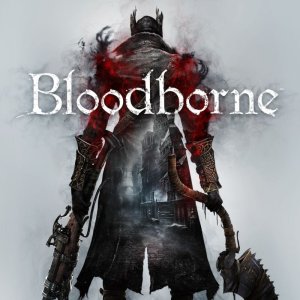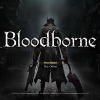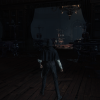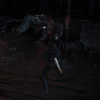Bloodborne is an action RPG that builds on the mechanics of the developer’s earlier games Demon’s Souls and the Dark Souls series. This title has Gothic and Victorian influences and it is set in the fantasy city Yharnam. The player’s character is one of the many travelers who go there to seek a cure for their ailments. The character creation process is a contract ledger at a clinic prior to a blood transfusion with the remedy. When the character wakes up it is discovered the entire city is overrun by an illness that has transformed the citizens into violent creatures. The character gets to explore the city in a non-linear way, meeting various inhabitants and defeating monsters to survive.
At the start a custom character can be created by defining a name, age, gender, origin and appearance. The starting statistics are a general starting level, starting blood echoes (the main currency), discovery (loot drop frequency), vitality, endurance, strength, skill, bloodtinge and arcane. The latter three influence who damages scales for certain builds. Origin replaces a general class system with different values for the statistics and a short back story. The available origins are Milquetoast, Lone Survivor, Troubled Childhood, Violent Past, Professional, Military Veteran, Noble Scion, Cruel Fate and Waste of Skin.
Early on in the game Hunter’s Dream is discovered, a location in another realm that acts as a central hub similar to The Nexus in Demon’s Souls. It is possible to warp there from the main game world after locating lamps. These lamps replace the bonfires of the previous games and it is still only possible to save at those locations. The hub has different messengers to buy and sell items, a workshop to upgrade and repair weapons, a storage for inventory management and a memory altar (through Caryll Runes). Through the Headstones of Awakening it is possible to warp to different parts of the world and Ritual Altars to access the Chalice Dungeons. These dungeons are randomly generated dungeons away from the main city players can explore. Layouts can also be shared or be found online. The two main characters in Hunter’s Dream are the wheelchair-bound Gehrman who provides advice and the life-size doll called Doll who helps leveling up. Next to the hub world it has the interconnect world known from the Dark Souls games.
Gameplay for combat, movement and exploration is largely similar to the Souls games. The weight statistic has been removed, there is less focus on defense and spells, and more on dodging. Rather than holding down a button, dodging is now an active and timing-based skill. The stamina bar is now more forgiving for multiple actions in succession. The amount of gear is more limited and the statistics are downplayed in favour of fighting skill for specific weapons. The main-hand weapon is generally melee while the off-hand usually holds a firearm mainly for combos and to riposte counter. An aggressive approach is rewarded through a new Regain system where certain attacks are rewarded with health after being hit, removing the need to run away and heal before continuing the fight. Generally health is restored through vials (found or purchased), replacing flasks in the previous games. Through the Insight stat enemy placement and attacks are influenced. Reaching a certain level also often brings new elements into the game world and changes how the world reacts to the protagonist. Some enemies are able to absorb souls, forcing you to reclaim them. Insights is also used as a currency to buy special items and required to summon other players. Next to the main weapons there are ten trick weapons, very powerful ones that have two forms that can be switched on the fly.
The online element is similar to the previous titles. Allies can be summoned in your world and it is possible to invade other people’s world. Up to three players can play cooperatively (not with private lobbies and passwords) and PvP is one-on-one. PvP is accessible after gaining an Insight rating of 30. Game elements include memoirs, asynchronous notes left behind, spectral appearances as illusions providing tips, and elements that show where other characters died.




